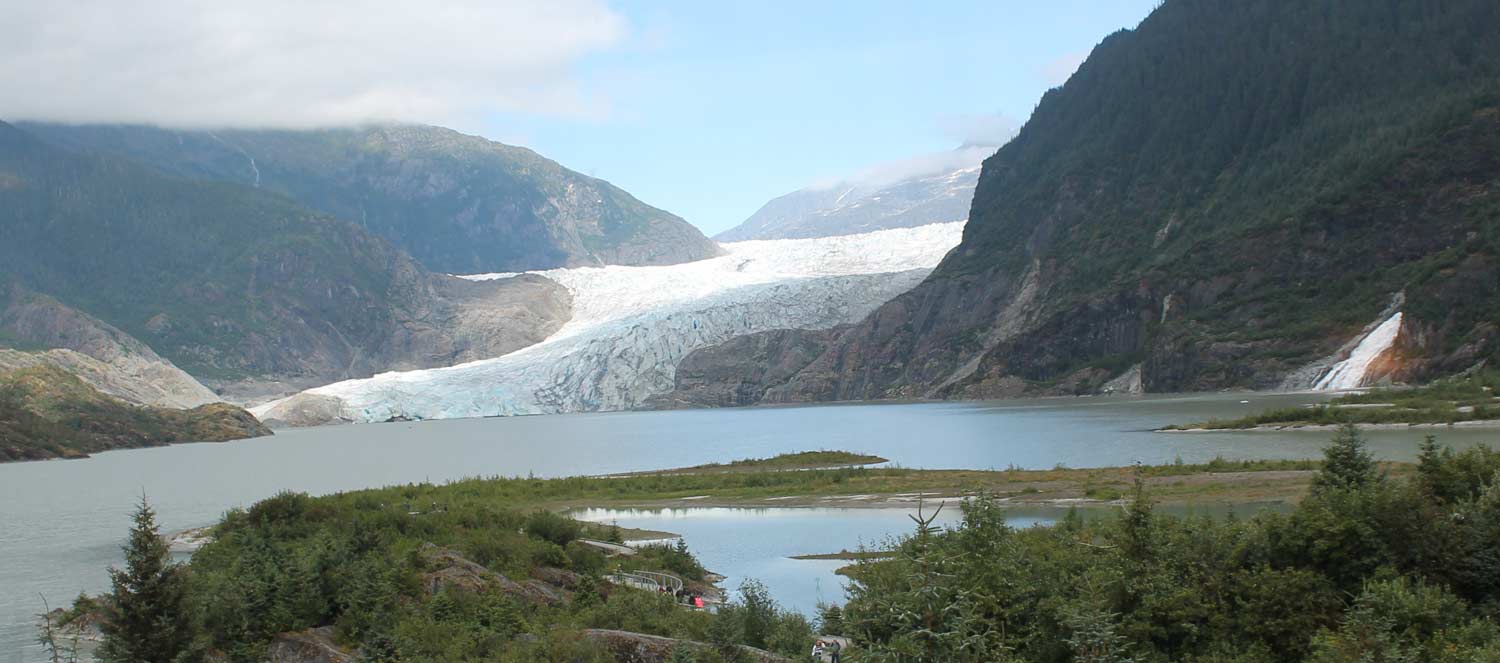The Mendenhall Glacier is an ice tongue that flows out of the massive Juneau Icefield. It’s retreating, leaving behind it a melt lake that is also fed by Nugget Falls, which can be seen beside the glacier. Though it is very close to the glacier, Nugget Falls doesn’t come from the Mendenhall Glacier’s melt. Instead, it flows from the creeks and rivers in the mountains.
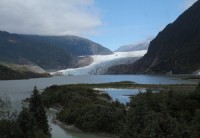
 A National Recreation Center and part of the Tongass National Forest, the glacier is a popular tourist site (there were certainly a lot of people there when we visited). The visitor center is perched up on the hillside, providing great views of the lake and the glacier, as well as information about the glacier and surrounding icefield.
A National Recreation Center and part of the Tongass National Forest, the glacier is a popular tourist site (there were certainly a lot of people there when we visited). The visitor center is perched up on the hillside, providing great views of the lake and the glacier, as well as information about the glacier and surrounding icefield.
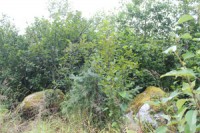 As the glacier retreats, vegetation starts to grow on the newly exposed land, so much of the vegetation around the glacier is ground cover and low bushes. Further away trees have taken root, but are still small. It is a very different forest from the ones you usually see on the West Coast.
As the glacier retreats, vegetation starts to grow on the newly exposed land, so much of the vegetation around the glacier is ground cover and low bushes. Further away trees have taken root, but are still small. It is a very different forest from the ones you usually see on the West Coast.
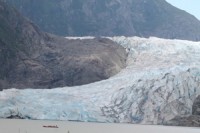 Seen against the huge mountains, and from a distance, it is hard to realize how high and thick the ice pack actually is. Only when a human scale is factored in, can you realize the immensity of this natural phenomenon. With the lake in front of it, you can’t really get close, but when you see a boat filled with people against the wall of ice, only then is it clear just how huge the Mendenhall Glacier still is.
Seen against the huge mountains, and from a distance, it is hard to realize how high and thick the ice pack actually is. Only when a human scale is factored in, can you realize the immensity of this natural phenomenon. With the lake in front of it, you can’t really get close, but when you see a boat filled with people against the wall of ice, only then is it clear just how huge the Mendenhall Glacier still is.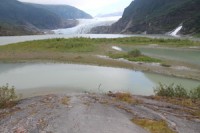
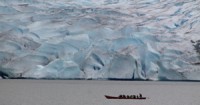 From a distance, glacial ice looks white and pristine. Close up it’s like snow cover in the spring. White, yes, but with patches of gritty gray where dust and dirt have built up. But inside glaciers is the most gorgeous blue. According to the naturalist on the boat, the colour is caused by light reflecting on particles in the ice. People often talk about ice blue eyes, or glacial blue eyes. Lucky is the individual who has eyes of such a lovely colour!
From a distance, glacial ice looks white and pristine. Close up it’s like snow cover in the spring. White, yes, but with patches of gritty gray where dust and dirt have built up. But inside glaciers is the most gorgeous blue. According to the naturalist on the boat, the colour is caused by light reflecting on particles in the ice. People often talk about ice blue eyes, or glacial blue eyes. Lucky is the individual who has eyes of such a lovely colour!
